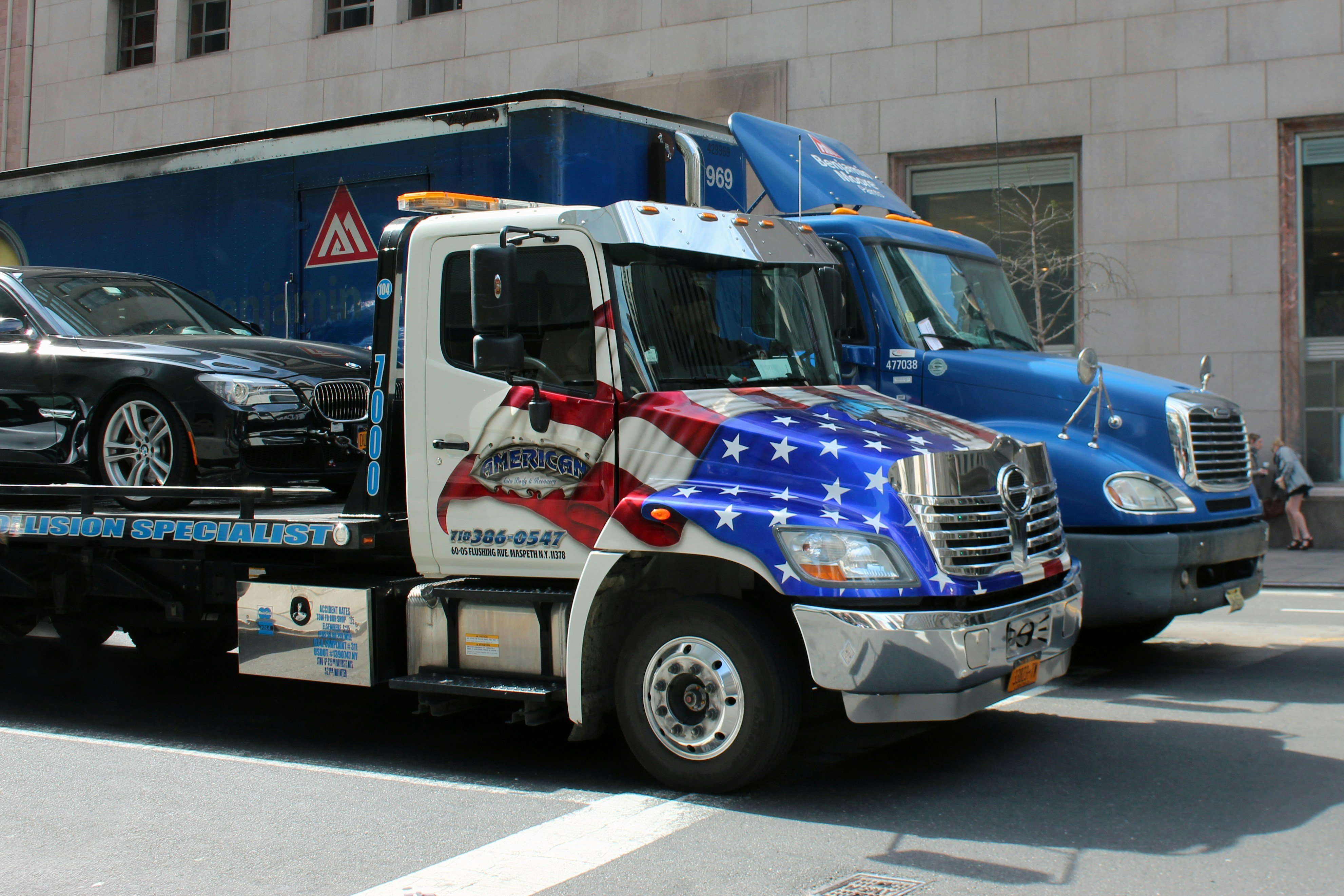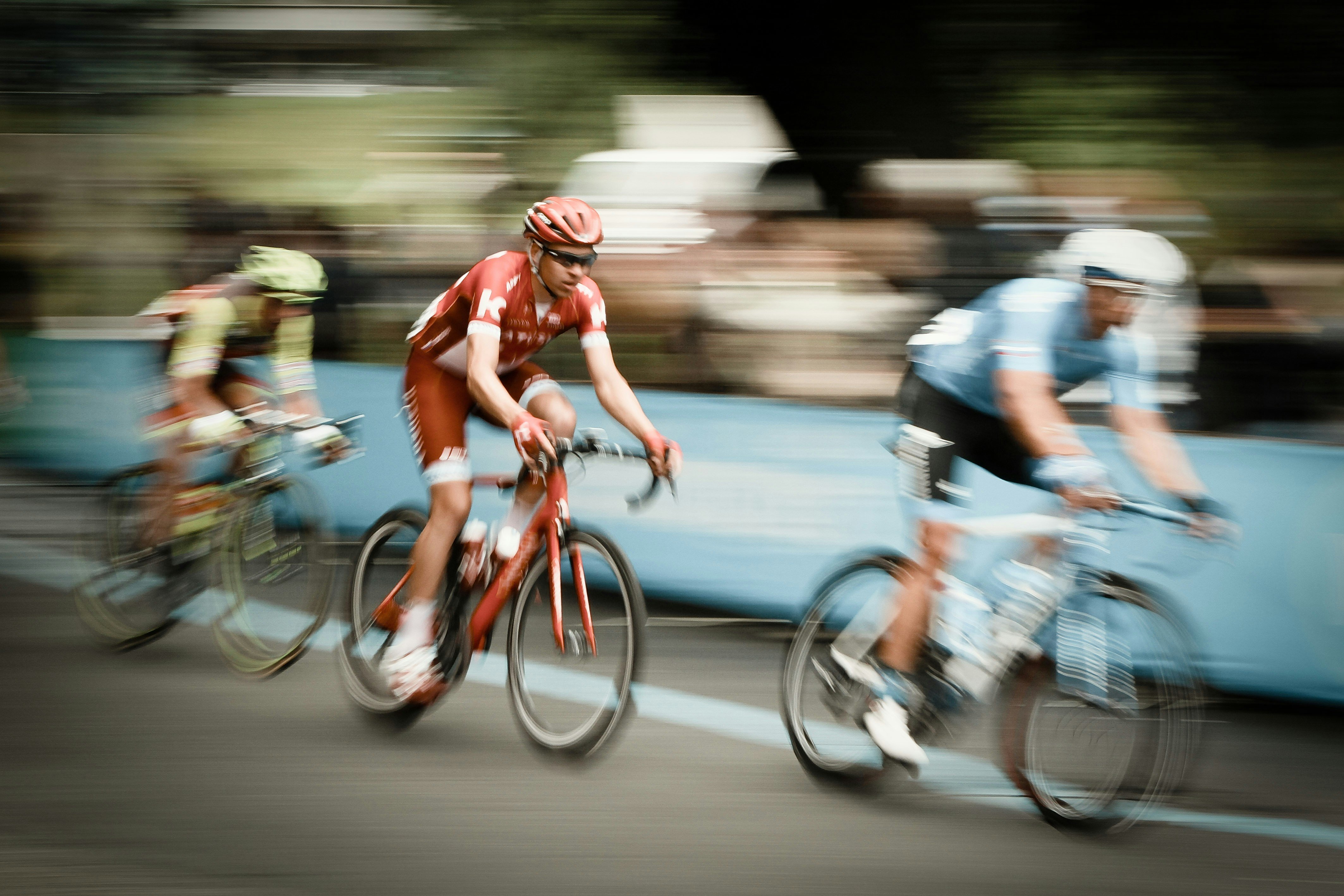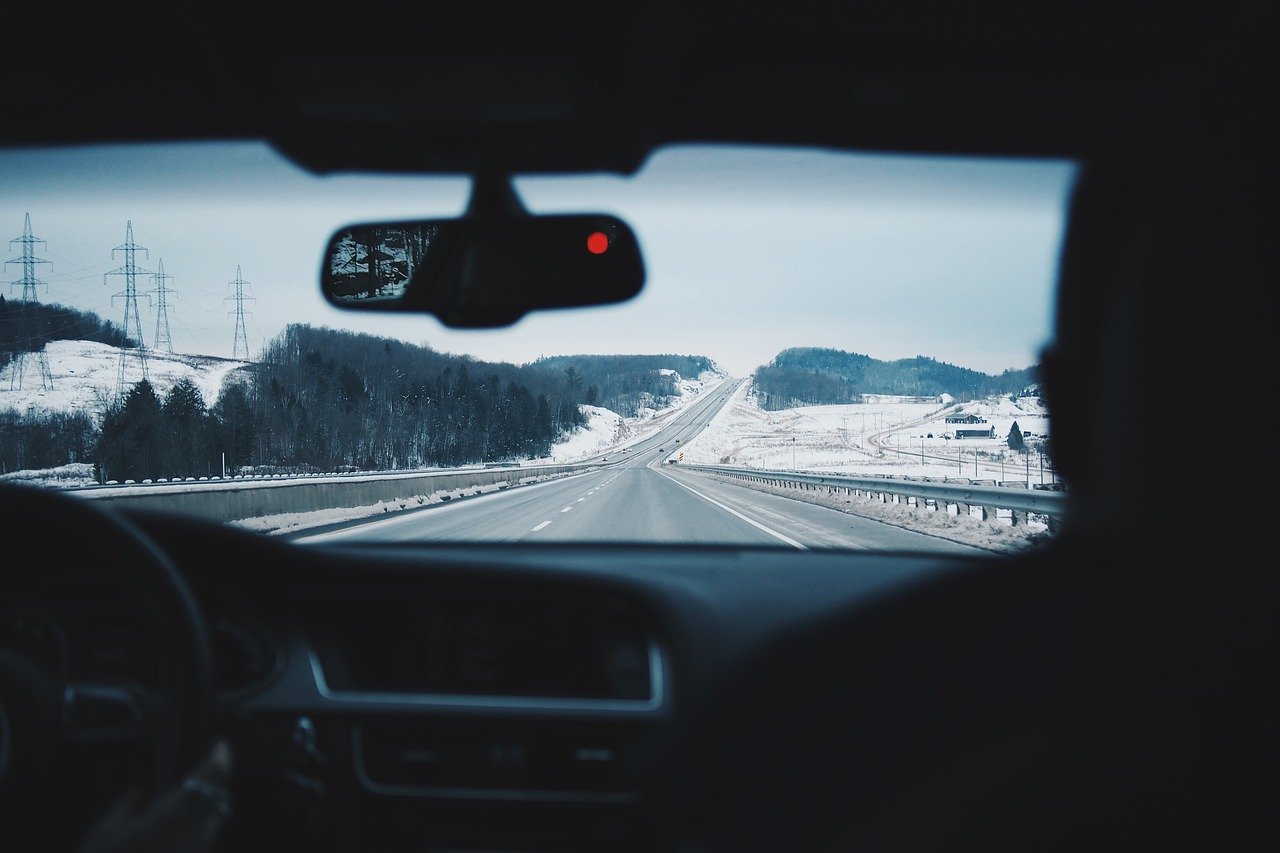The Curious Case: The Illegality of Putting a 'For Sale' Sign in Your Vehicle
In recent years, a peculiar legal issue has emerged that has caught the attention of vehicle owners and enthusiasts.

It turns out that in certain jurisdictions, it is considered illegal to display a 'For Sale' sign on your vehicle. In this article, we will delve into the reasons behind this.
The Rationale Behind the Ban
1. Traffic Safety Concerns: One of the primary arguments put forth by those supporting the ban is the concern for road safety. Supporters contend that 'For Sale' signs on moving vehicles can be distracting to other drivers, potentially leading to accidents or traffic congestion.
2. Aesthetics and Community Standards: Some communities have implemented these regulations to maintain aesthetic standards. They argue that multiple vehicles with 'For Sale' signs can clutter the streets, giving a sense of disarray and negatively affecting property values.
3. Commercial Zoning Regulations: In certain areas, placing 'For Sale' signs on vehicles is seen as a violation of commercial zoning regulations. These regulations aim to maintain a clear distinction between private and commercial activities, and proponents argue that allowing vehicle sales on public roads blurs this line.

Implications and Concerns
1. Restriction of Personal Property Rights: Critics argue that prohibiting individuals from advertising the sale of their personal property infringes upon their right to freely engage in private transactions. They contend that as long as the vehicle is legally owned and the sale adheres to relevant laws, individuals should have the right to advertise their intent to sell.
2. Impact on Small Businesses and Independent Sellers: The ban can disproportionately affect small businesses and independent sellers who rely on their vehicles to advertise their products or services. For entrepreneurs without a brick-and-mortar location, the truck may serve as their primary means of marketing and attracting potential customers.
3. Limiting Consumer Choice: The restriction on 'For Sale' signs can limit consumer choice and make it more difficult for buyers to locate vehicles for sale. Potential buyers may find it challenging to identify available options, resulting in a less efficient and transparent marketplace.
Balancing Personal Freedom and Public Interests
1. Reasonable Restrictions: Supporters of the ban argue that reasonable restrictions on personal property rights are necessary to maintain public safety, aesthetics, and zoning regulations. They contend that the ban is a justifiable limitation that promotes the greater good of the community.
2. Alternative Solutions: Critics of the ban propose alternative solutions to address the concerns raised. For instance, implementing guidelines on the size and placement of 'For Sale' signs, or designating specific areas where vehicles can be parked for sale, may offer a compromise that meets both public and private interests.
3. Local Ordinances and Consistency: It is important for local ordinances to be clear, consistent, and communicated effectively to avoid confusion and potential conflicts. Transparency in regulations and open discussions with relevant stakeholders can help ensure that the interests of all parties are considered.

All in all, the prohibition on placing 'For Sale' signs on vehicles has ignited a contentious debate surrounding personal property rights, freedom of expression, and community interests. While concerns about road safety, aesthetics, and zoning regulations have been cited as reasons for the ban, critics argue that it restricts personal freedom and limits consumer choice. Striking a balance between personal freedom and public interests is a delicate task, and ongoing discussions and thoughtful consideration of alternative solutions are necessary to address the concerns raised. Ultimately, a well-informed and inclusive approach is essential to ensure that regulations governing personal property rights align with the values and needs of the community as a whole.

A Fresh Guide to Essential Gear for Outdoor Hiking
To fully enjoy the journey, having the right gear is essential for safety, comfort, and convenience. In this comprehensive guide, we will explore the essential equipment needed for outdoor hiking and provide valuable insights for hikers to make informed decisions when it comes to gear selection.Footwear: The Foundation of Every HikeThe importance of proper footwear cannot be overstated when it comes to hiking. Invest in high-quality hiking boots or trail shoes that provide ankle support, a sturdy sole, and waterproofing. A proper fit is crucial to prevent blisters and ensure stability on rugged terrain.Backpack: Carrying Comfort and ConvenienceSelecting the right backpack is essential for carrying all your essential gear. Look for a backpack with padded shoulder straps, adjustable waist belt, and multiple compartments for organized storage. Consider the capacity based on the length of your hikes and the gear you plan to carry.Clothing: Layering for Comfort and ProtectionDress in layers to regulate body temperature and protect against the elements. Moisture-wicking base layers, insulating mid-layers, and waterproof outer layers are essential. Don't forget to pack a hat, gloves, and extra socks for changing weather conditions.Navigation Tools: Finding Your Way SafelyA reliable map and compass are essential for navigating through unfamiliar terrain. Consider complementing these traditional tools with a GPS device or smartphone app for added convenience. Be sure to familiarize yourself with how to use these tools before heading out.

A Step in the Right Direction: Choosing Comfortable Outdoor Sports Shoes
Whether you're hitting the trails, going for a run, or simply enjoying a leisurely walk in the park, the right pair of shoes can make all the difference in your comfort and performance. In this guide, we will explore the key factors to consider when selecting outdoor sports shoes, providing valuable insights to help our readers make the best choice for their active lifestyle.Support and Cushioning: The Foundation of ComfortWhen selecting outdoor sports shoes, prioritizing support and cushioning is crucial. Look for shoes with ample arch support, a well-cushioned midsole, and a comfortable insole to provide stability and reduce impact on your feet and joints. Whether it's a trail running shoe or a hiking boot, ensuring adequate support and cushioning will help prevent fatigue and discomfort during extended periods of activity.Breathability and Moisture Management: Keeping Cool and DryOutdoor activities often lead to increased perspiration, and wearing shoes with proper breathability and moisture-wicking properties can make a significant difference in comfort. Opt for shoes constructed with breathable mesh or moisture-wicking materials to promote airflow and keep your feet cool and dry, reducing the risk of blisters and discomfort.Traction and Grip: Staying Sure-FootedFor outdoor sports, traction and grip are non-negotiable. Whether you're navigating rugged trails or wet surfaces, choosing shoes with a reliable outsole featuring deep treads or lugs will provide the traction needed to stay sure-footed. Additionally, shoes with a durable and slip-resistant outsole can enhance stability and confidence during various outdoor activities.

The Physical Benefits of Several Types of Exercise
This article will explore in detail the specific benefits of several different types of exercise to help readers better understand and choose the right type of exercise for them.1.Aerobic exercise: improve heart and lung functionAerobic exercise, such as running, swimming, cycling, etc., is an important means to improve heart and lung function. This type of exercise can increase the heart rate, improve the speed of blood circulation, and deliver sufficient oxygen and nutrients to all parts of the body. Long-term adherence to aerobic exercise can effectively reduce the risk of cardiovascular disease, enhance myocardial strength, and improve lung capacity. In addition, aerobic exercise can also promote fat burning, helping to lose weight and shape.2.Strength training: build muscle lines, improve the basal metabolic rateStrength Training can practice the muscle gatherings of the body and make a solid muscle line. Through strength training, we can further develop muscle strength and perseverance and increment bone thickness and strength, along these lines forestalling bone sicknesses like osteoporosis. Furthermore, muscle is the principal place where the body consumes energy, expanding bulk can build the basal metabolic rate, so we can likewise consume more energy when we are very still, which assists with shedding pounds and keep up with the figure.3.Flexibility training: Relieve muscle tension and prevent sports injuriesFlexibility training, like yoga, Pilates, extending, and so forth, can upgrade the adaptability of the body and the adaptability of the joints. This sort of activity can assist us with easing muscle pressure and forestall muscle solidness and torment brought about by standing firm on a similar foothold for quite a while. Simultaneously, adaptability preparing additionally works on joint scope of movement and diminishes the gamble of sports wounds. Long haul adherence to adaptability preparing can make us more agreeable in sports and further develop sports execution.

Step by Step Instructions to Wear a Wig
However, wearing a wig is not a simple matter and requires a certain amount of skill and patience. This article will detail the steps and precautions on how to wear a wig.1.Choose the right wigIt is pivotal to pick the right hairpiece. In the acquisition of hairpieces, you need to pick as per your head type, hair quality, hairdo and different variables. By and large, material of hairpieces can be isolated into two classes: fake hair and genuine hair. The upside of counterfeit hair is that it is not difficult to deal with and the cost is generally low; The benefit of genuine hair is that it is more normal and sensible, yet the cost is higher. While picking, you can make compromises in light of your requirements and financial plan.2.Prepare tools and hairBefore wearing a wig, you need to prepare some necessary tools and hair. Tools include combs, hair clips, small black clips and gloves; When it comes to hair, you need to make sure your hair is clean, dry and oil-free. If the hair is relatively long, it is recommended to cut it short first, so that it is easier to care and wear the wig.3.The steps of wearing a wigPut the wig on your headFirst, put the wig on your head, making sure it fits your own hair. Be careful not to pull the wig too hard, so as not to damage or cause discomfort to the scalp.Adjust the wig positionAfter putting on the wig, you need to adjust its position. Use a comb or your fingers to gently comb the wig so it blends in more with your own hair. At the same time, pay attention to adjusting the Angle and position of the wig to make it look more natural.Secure with bobby pinsIn order to prevent the wig from falling off or shifting, hair clips can be used to secure it. When fixing, be careful not to pull the hair excessively, so as not to cause pain or damage.Tidy up the detailsFinally, tidy up the details of the wig. Check if there are warped or uneven areas, and use a comb or fingers to gently comb it to make it look more natural and realistic.

What Should You Do for Your Car in Winter
In this season,owners should carry out a series of necessary checks. Let's take a look at what you should check for your car in the winter.1.Engine oilFirst, you need to check whether the engine oil is clean and whether it needs to be replaced. In winter, the viscosity of engine oil will increase, if the oil is not clean or has deteriorated, it may affect the normal operation of the engine. Therefore, before the arrival of winter, clean oil should be replaced to ensure the normal operation of the engine.2.Cooling systemThe cooling system is an important part of keeping the engine running properly. In the winter, the cleanliness and concentration of the coolant should be checked, and if the coolant is insufficient or of poor quality, it should be replaced in time. At the same time, it is also necessary to check whether the various components of the cooling system are leaking or damaged, and if there is a problem, it should be repaired in time.3.The batteryIn winter, the temperature is low, the power of the battery will be affected, and it is easy to lose power. Therefore, before the arrival of winter, you should check whether the battery is sufficient, if the power is insufficient, you should charge it in time. At the same time, it is also necessary to check whether the connection of the battery is tight to prevent the loss of electricity due to loose connection.4.TireThe tire is the part of the vehicle in contact with the ground, and its condition is directly related to the safe driving of the vehicle. In winter, because the temperature is lower, the road may become slippery or icy, so it is necessary to check the depth of the tire pattern and air pressure to meet the standard. If the tire is seriously worn or the air pressure is insufficient, it will affect the grip and driving stability of the tire, and increase the risk of accidents.
TOP NEWS


.png)

.png)

.png)

.png)

.png)

.png)

.png)

.png)
.png)
Recommended suppliers
Trade Alert
- Delivery New Products To YouTell Us What Are You Looking For?

- Acre/Acres
- Ampere/Amperes
- Bag/Bags
- Barrel/Barrels
- Blade/Blades
- Box/Boxes
- Bushel/Bushels
- Carat/Carats
- Carton/Cartons
- Case/Cases
- Centimeter/Centimeters
- Chain/Chains
- Combo/Combos
- Cubic Centimeter/Cubic Centimeters
- Cubic Foot/Cubic Feet
- Cubic Inch/Cubic Inches
- Cubic Meter/Cubic Meters
- Cubic Yard/Cubic Yards
- Degrees Celsius
- Degrees Fahrenheit
- Dozen/Dozens
- Dram/Drams
- Fluid Ounce/Fluid Ounces
- Foot/Feet
- Forty-Foot Container
- Furlong/Furlongs
- Gallon/Gallons
- Gill/Gills
- Grain/Grains
- Gram/Grams
- Gross
- Hectare/Hectares
- Hertz
- Inch/Inches
- Kiloampere/Kiloamperes
- Kilogram/Kilograms
- Kilohertz
- Kilometer/Kilometers
- Kiloohm/Kiloohms
- Kilovolt/Kilovolts
- Kilowatt/Kilowatts
- Liter/Liters
- Long Ton/Long Tons
- Megahertz
- Meter/Meters
- Metric Ton/Metric Tons
- Mile/Miles
- Milliampere/Milliamperes
- Milligram/Milligrams
- Millihertz
- Milliliter/Milliliters
- Millimeter/Millimeters
- Milliohm/Milliohms
- Millivolt/Millivolts
- Milliwatt/Milliwatts
- Nautical Mile/Nautical Miles
- Ohm/Ohms
- Ounce/Ounces
- Pack/Packs
- Pair/Pairs
- Pallet/Pallets
- Parcel/Parcels
- Perch/Perches
- Piece/Pieces
- Pint/Pints
- Plant/Plants
- Pole/Poles
- Pound/Pounds
- Quart/Quarts
- Quarter/Quarters
- Rod/Rods
- Roll/Rolls
- Set/Sets
- Sheet/Sheets
- Short Ton/Short Tons
- Square Centimeter/Square Centimeters
- Square Foot/Square Feet
- Square Inch/Square Inches
- Square Meter/Square Meters
- Square Mile/Square Miles
- Square Yard/Square Yards
- Stone/Stones
- Strand/Strands
- Ton/Tons
- Tonne/Tonnes
- Tray/Trays
- Twenty-Foot Container
- Unit/Units
- Volt/Volts
- Watt/Watts
- Wp
- Yard/Yards
Select template type:
One Request, Multiple Quotes.









